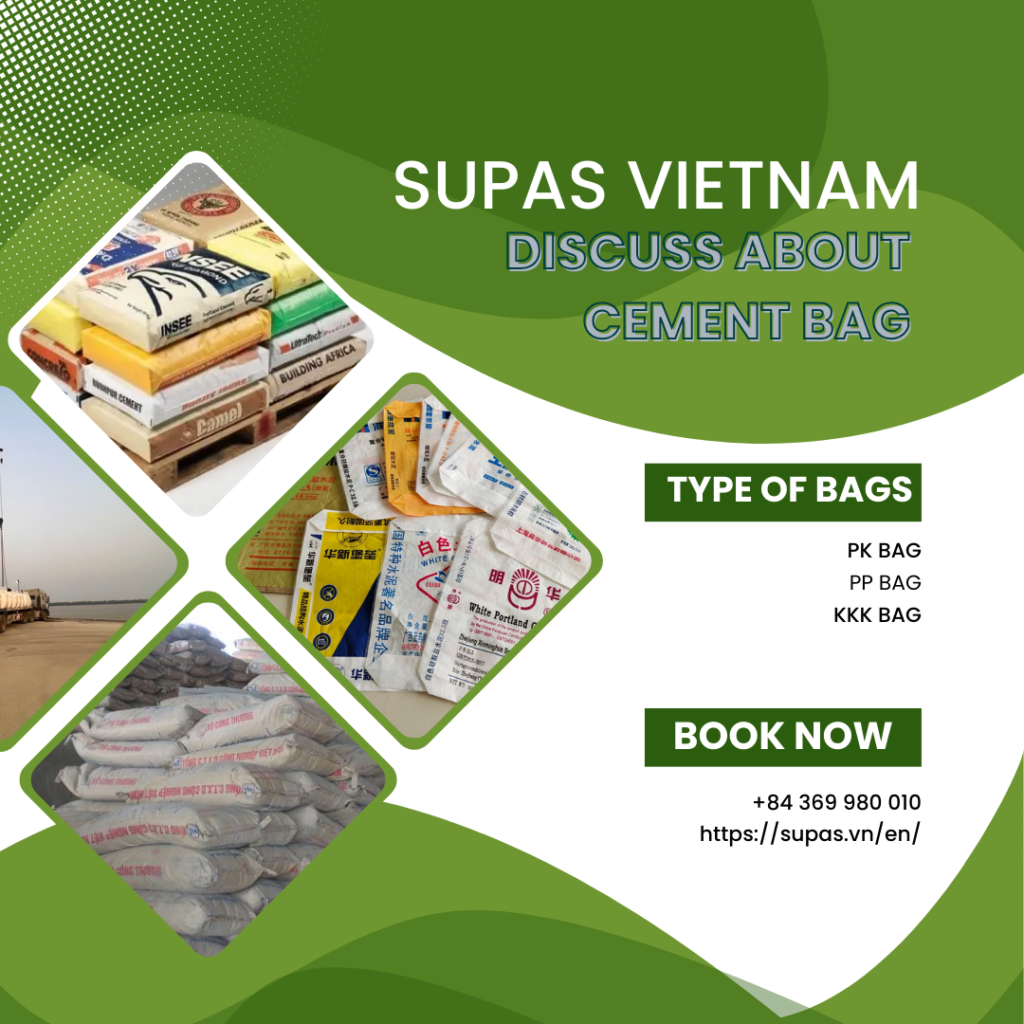At this part, we will discuss about small bag firstly:
1️⃣ Bag Breakage Rate
PP 50kg Bags:
PP 50kg bags are the most common type of cement packaging due to their low production cost and ease of manufacturing. However, their single-layer woven polypropylene structure offers only moderate mechanical strength. In real-world use, the breakage rate during transportation, handling, and storage ranges from 0.3% to 0.5%. This rate is acceptable for the mass market, but for long-distance transport or frequent handling, it poses a risk of product loss.
PK 50kg Bags:
PK bags are considered premium packaging, combining an outer polypropylene layer with an inner kraft paper layer, creating excellent durability. With a breakage rate of less than 0.1%, PK bags perform exceptionally well, even during long-distance transport or container shipping for exports. As a result, PK bags are the preferred choice for major cement manufacturers, especially for high-end brands.
KKK 50kg Bags:
KKK bags (Kraft-Kraft-Kraft) are made from three layers of kraft paper, which provides decent mechanical strength, resulting in a breakage rate of less than 0.3%. While not as strong as PK bags, they still provide adequate protection for domestic transport when handled carefully.
2️⃣ Mechanical Durability
PP 50kg Bags:
With just one thin layer of polypropylene, PP bags offer limited durability. In drop tests from 2 meters, PP bags withstand approximately 12 drops before signs of tearing or seam failure appear. This level of durability is suitable for short-distance transportation and direct sales to local distributors or retailers.
PK 50kg Bags:
Thanks to its multi-layer structure, PK bags demonstrate excellent resistance to impact and tearing. In the same 2-meter drop test, PK bags withstand over 20 consecutive drops, highlighting their superior durability. PK bags are well-suited for both domestic sales and exports, particularly in automated handling systems and container shipping.
KKK 50kg Bags:
Although made entirely from kraft paper, the triple-layer design gives KKK bags fairly good durability. However, they are still less durable than PK bags. The performance of KKK bags is highly dependent on storage conditions, and prolonged exposure to moisture can significantly weaken the paper.
3️⃣ Moisture Resistance

PP 50kg Bags:
With only a single plastic layer, PP bags provide limited moisture protection. Cement packaged in PP bags should ideally be used within two months to avoid clumping caused by moisture absorption. In suboptimal warehouse conditions, PP bags are prone to moisture penetration, which reduces cement quality.
PK 50kg Bags:
PK bags combine a moisture-resistant PP outer layer with a kraft paper inner layer that helps release trapped air and balance internal pressure. This combination allows PK bags to protect cement for over six months, even in less-than-ideal storage environments.
KKK 50kg Bags:
With three layers of kraft paper, KKK bags offer better moisture resistance than PP bags, but they are still less effective than PK bags due to the lack of an external plastic barrier. Proper storage conditions are essential when using KKK bags, especially in humid climates.
4️⃣ Appearance and Branding Potential
PP 50kg Bags:
PP bags support high-quality printing thanks to the smooth polypropylene surface, ensuring sharp, vibrant brand logos and product information. However, due to their thin material and tendency to lose shape, they often appear less structured and neat, which can reduce visual appeal in retail displays.
PK 50kg Bags:
PK bags are highly regarded for their appearance. Their square, well-formed shape enhances stacking efficiency and visual presentation. With advanced printing technology, PK bags deliver crisp, vibrant branding, which can increase brand recognition by up to 30%, particularly in export markets.
KKK 50kg Bags:
KKK bags also offer a neat, square shape, and printing on kraft paper surfaces produces clear, attractive branding, making them a good choice for premium products.
5️⃣ Cleanliness and Surface Dust Control
PP 50kg Bags:
PP bags tend to collect cement dust on their surface after filling, making cleaning difficult, especially at construction sites where appearance matters.
PK 50kg Bags:
The kraft inner layer of PK bags helps contain cement dust inside the bag, keeping the outer PP surface cleaner and easier to wipe down during handling and storage.
KKK 50kg Bags:
KKK bags offer similar cleanliness benefits to PK bags, with less surface dust accumulation compared to PP bags.
6️⃣ Environmental Impact
PP 50kg Bags:
Made from synthetic plastic, PP bags decompose very slowly in the natural environment, though they are recyclable after collection.
PK 50kg Bags:
PK bags contain both plastic and paper components, making them partially recyclable, though separating materials can be challenging.
KKK 50kg Bags:
Composed entirely of kraft paper, KKK bags decompose much faster than plastic bags. However, their production requires a significant amount of timber, raising concerns about deforestation and resource consumption.
Conclusion
- ✅ PK 50kg Bags are the most well-rounded choice, offering excellent protection, durability, and branding potential, making them ideal for premium cement brands, particularly those targeting export markets.
- ✅ PP 50kg Bags are the most economical choice, suitable for domestic markets with short supply chains and lower packaging requirements.
What Types of Bags Are Used in Your Region?
We’d love to hear your insights — share your experience with us!
Author: Elly Nguyen
Whatsapp/ Zalo/ Viber:: +84 369 980 010



How do different types of cement bags—PP, PK, and KKK—impact durability, breakage rate, and moisture resistance in packaging?
Pls contact us at +84 369 980 010 to know details